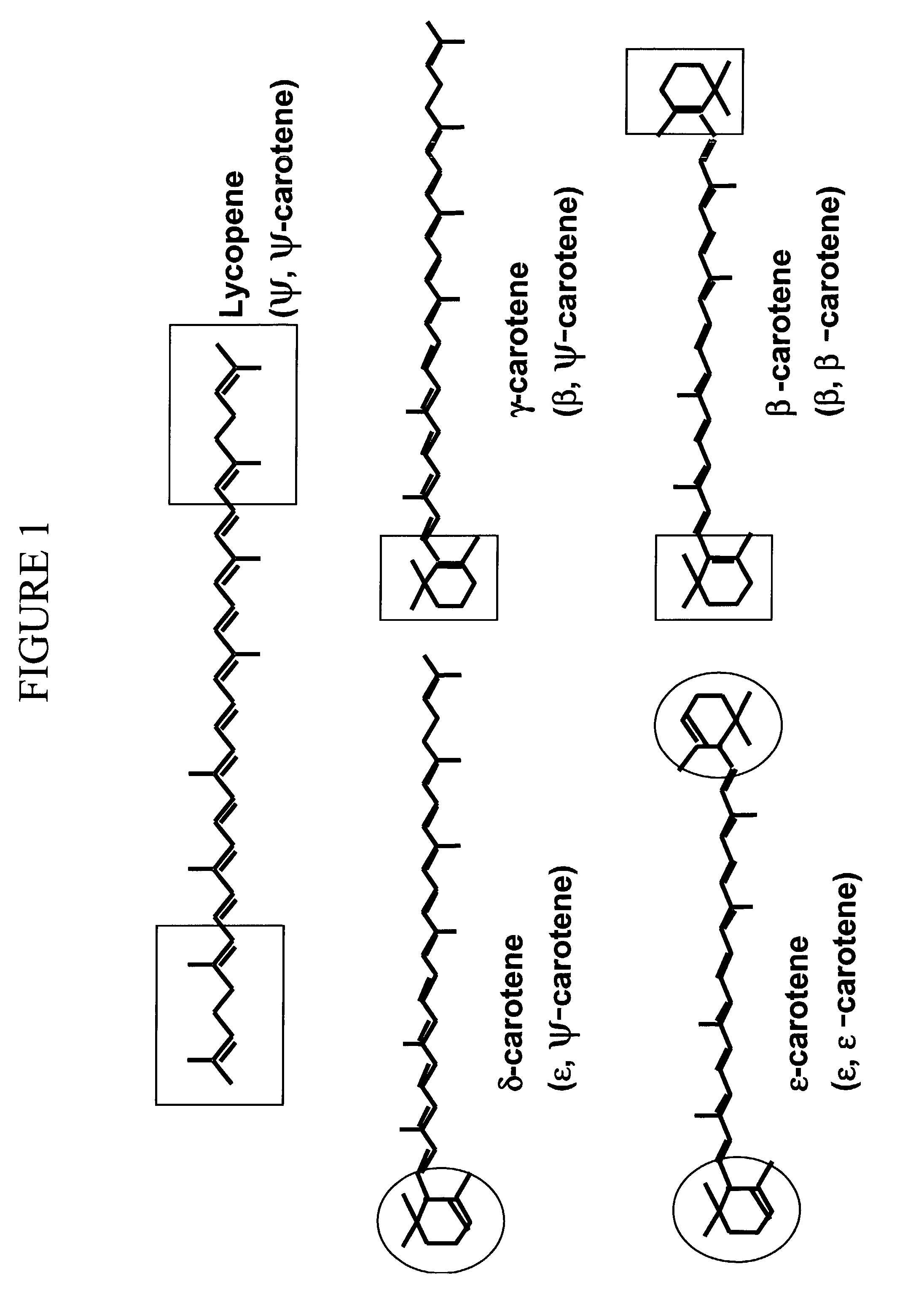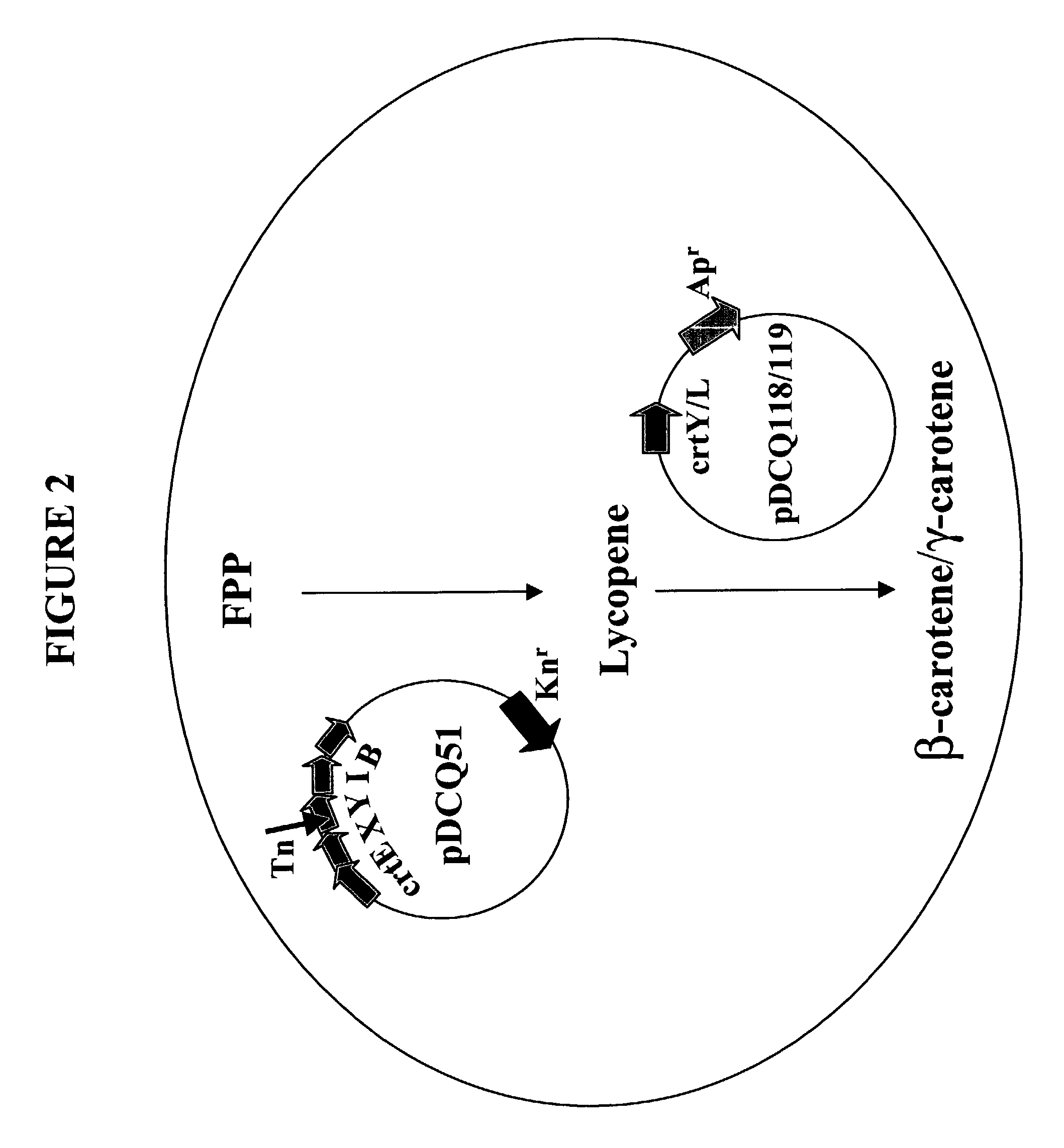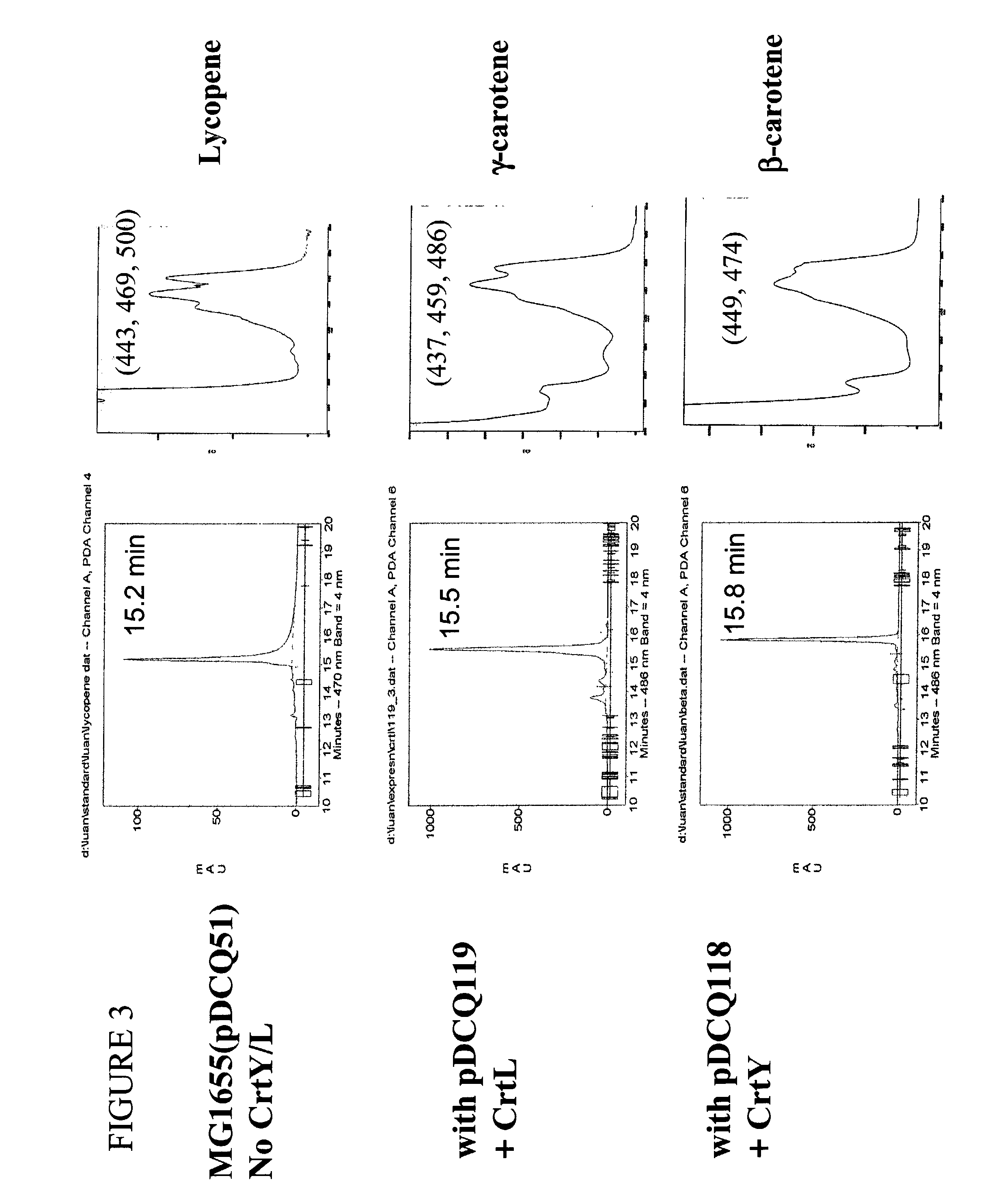Method for production of asymmetric carotenoids
a carotenoids and asymmetric technology, applied in the field of microorganism production, can solve the problems of not teaching enzymes that were selective for the production of monocyclic carotenoids, the inability to isolate and purify monocyclic carotenoids, and the significant investment in time and resources
- Summary
- Abstract
- Description
- Claims
- Application Information
AI Technical Summary
Benefits of technology
Problems solved by technology
Method used
Image
Examples
example 1
Isolation and Characterization of Strain AN12
[0174]Example 1 describes the isolation of strain AN12 of Rhodococcus erythropolis on the basis of being able to grow on aniline as the sole source of carbon and energy. Analysis of a 16S rRNA gene sequence indicated that strain AN12 was related to high G+C Gram positive bacteria belonging to the genus Rhodococcus.
[0175]Bacteria that grew on aniline were isolated from an enrichment culture. The enrichment culture was established by inoculating 1 ml of activated sludge into 10 ml of S12 medium (10 mM ammonium sulfate, 50 mM potassium phosphate buffer (pH 7.0), 2 mM MgCl2, 0.7 mM CaCl2, 50 μM MnCl2, 1 μM FeCl3, 1 μM ZnCl3, 1.72 μM CuSO4, 2.53 μM CoCl2, 2.42 μM Na2MoO2, and 0.0001% FeSO4) in a 125 ml screw cap Erlenmeyer flask. The activated sludge was obtained from a wastewater treatment facility. The enrichment culture was supplemented with 100 ppm aniline added directly to the culture medium and was incubated at 25° C. with reciprocal sh...
example 2
Identification of Lycopene Cyclases from Rhodococcus and Deinococcus
[0178]The ORF for crtL was identified by conducting BLAST (Basic Local Alignment Search Tool; Altschul et al., J. Mol. Biol. 215:403–410 (1993); see also www.ncbi.nlm.nih.gov / BLAST / ) searches for similarity to sequences contained in the BLAST “nr” database (comprising all non-redundant (nr) GenBank® CDS translations, sequences derived from the 3-dimensional structure Brookhaven Protein Data Bank, the SWISS-PROT protein sequence database, EMBL, and DDBJ databases). The genomic sequence of Rhodococcus erythropolis AN12 was analyzed for similarity to all publicly available DNA sequences contained in the “nr” database using the BLASTN algorithm provided by the National Center for Biotechnology Information (NCBI). The DNA sequences were translated in all reading frames and compared for similarity to all publicly available protein sequences contained in the “nr” database using the BLASTX algorithm (Altschul et al., Nucle...
example 3
Rhodococcus Erythropolis AN12 Produces Monocyclic Carotenoids
[0180]Rhodococcus erythropolis strain AN12 is naturally pigmented. The carotenoid pigments in the strain were extracted and analyzed by HPLC. AN12 cells were grown in 100 ml NBYE (0.8% nutrient broth+0.5% yeast extract) at 26° C. overnight with shaking to the stationary phase. Cells were spun down at 4000 g for 15 min, and the cell pellets were resuspended in 10-ml acetone. Carotenoids were extracted into acetone with constant shaking at room temperature. After 1 hour, the cells were spun down at the same condition as above and the supernatant was collected. The extraction was repeated once, and the supernatants of both extractions were combined and dried under nitrogen. The dried material was redissolved in 0.5-ml methanol and insoluble material was removed by centrifugation at 16,000 g for 2 min in an Eppendorf microcentrifuge 5415C (Brinkmann instruments, Inc., Westbury. N.Y.). The extracted sample of 0.1 ml was used fo...
PUM
| Property | Measurement | Unit |
|---|---|---|
| temperature | aaaaa | aaaaa |
| temperature | aaaaa | aaaaa |
| temperature | aaaaa | aaaaa |
Abstract
Description
Claims
Application Information
 Login to View More
Login to View More - R&D
- Intellectual Property
- Life Sciences
- Materials
- Tech Scout
- Unparalleled Data Quality
- Higher Quality Content
- 60% Fewer Hallucinations
Browse by: Latest US Patents, China's latest patents, Technical Efficacy Thesaurus, Application Domain, Technology Topic, Popular Technical Reports.
© 2025 PatSnap. All rights reserved.Legal|Privacy policy|Modern Slavery Act Transparency Statement|Sitemap|About US| Contact US: help@patsnap.com



